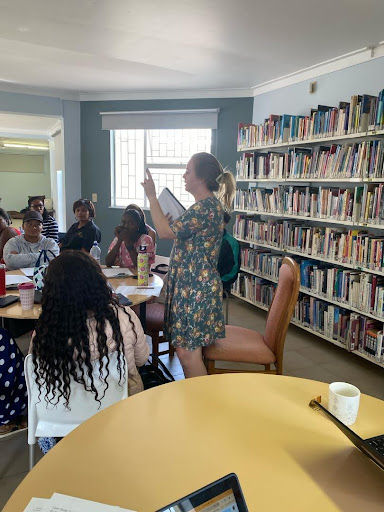More on Literacy: A Closer Look at MAP Reading Fluency in the Primary School
- Windhoek International School
- Sep 22, 2023
- 2 min read
Dear WIS Community,
With our focus on literacy across the curriculum at WIS, we have made a significant investment in the Measure of Academic Progress (MAP) Reading Fluency program. In this week’s Oryx article, I want to give you a brief overview of this assessment and how it is used. Before, we used Fountas and Pinnell Benchmark testing to ascertain students’ reading levels, however, these tests were highly time-consuming, taking away from instructional reading time. We believe MAP Reading Fluency will collect the data we need in an easy and informative way, while allowing teachers to focus on quality reading instructional time. Before you read on, here are some links that might be helpful to understand how students learn to read in general:
The Simple View of Reading (video)
Understanding MAP Reading Fluency
The MAP Reading Fluency program is designed to assess and enhance a student's oral reading fluency and comprehension skills. It provides us with valuable insights into each student's reading proficiency and offers personalised, data-driven recommendations for improvement. This tool goes beyond traditional assessments by focusing on real-time, adaptive testing that adapts to each student's unique reading level and needs.

Personalised Learning
One of the most notable features of MAP Reading Fluency is its ability to tailor instruction to individual students. By pinpointing each student's reading level and comprehension abilities, teachers can create personalised learning plans that address specific areas for improvement. This means that struggling readers receive targeted support, while advanced readers are challenged at an appropriate level, ensuring that every child makes progress at their own pace.
Objective Measurement
MAP Reading Fluency employs objective measurement tools that adapt to the student's performance, ensuring that their progress is accurately tracked. This data-driven approach provides a comprehensive view of a student's reading abilities, enabling educators to make informed decisions about instruction and intervention.
Teacher Empowerment
Our teachers are at the heart of this test. MAP Reading Fluency equips them with real-time data and insights, allowing them to identify students' strengths and weaknesses promptly. With this information, teachers can tailor their teaching methods, resources, and interventions to suit the needs of each student, creating a more effective and engaging learning experience.
Parental Involvement
We believe that parental involvement is crucial in a child's educational journey. MAP Reading Fluency facilitates a stronger connection between the school and parents. Parents receive regular updates on their child's reading progress, which opens up opportunities for meaningful conversations about their child's learning and growth.
Please reach out to Jenna (Literacy Coordinator), your child’s homeroom teacher or myself if you have any questions about the MAP Reading Fluency assessment.
Wishing you a wonderful weekend.
Warmly,
Marcelle van Leenen
Primary Principal








Comments